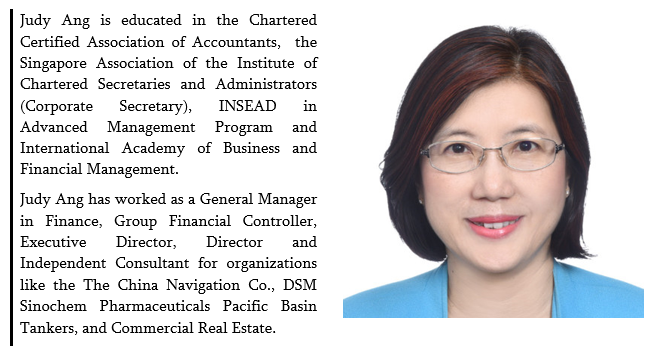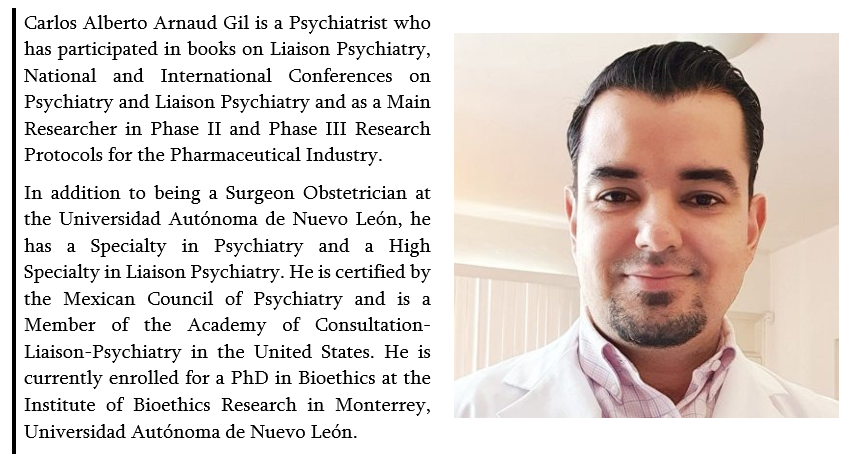This question is the topic of a series of articles in the coming weeks around the theme of having your “House in Order”.
A couple of weeks ago we published a second article that focused on the tenet “First organize, then Automate”. This article will further zoom in on having your “House in Order” regarding data and business processes.
Not having your data and business processes in order often leads to a loss of business opportunities which eventually results in lower profits.
But why is this the case? And for what reasons should companies have their data and business processes in order?
If the data is not in order in a company, it becomes difficult to see where the money is earned. Especially when a company reaches a certain size, simple rules of thumb won´t be sufficient nor efficient. This often leads to a lack of visibility for important key figures. This results in missing business opportunities or worse, thinking you are making money on products or services where you are making a loss.
Business processes that are not in order result in poor efficiency, hence the operation is run at a higher cost than needed. It can also result in slower processes than the competition and this will lead for sure to a loss of business opportunities. The deadly cocktail of poor efficiency and loss of business opportunities don´t need further explanation but this is the least desired situation where you want to have your company.
If it looks like a no-brainer to have your data and processes in order, why are there so many companies that don´t do this and if they do, why is it such a struggle to get this done?
There are two main reasons for this:
1. In many companies, data and process improvement is seen as a hassle, something that is difficult and requires lots of effort while having only small benefits. It is often not done because people tell each other stories about how difficult it is when in fact they lack the knowledge to execute such improvements.
2. The improvement potential in companies is often not explored well enough. In most companies, there are knowledgeable people scattered in the organization that would know very well how to improve. But often, these people don´t get the chance, are either not motivated by the management or even not identified. The principle of “the best consultants are your own employees” is not used.
Both topics are difficult topics to address. It requires experience to address them properly. Q7 Consulting has this experience and can help you to start improving your data and business processes.
Stay tuned in the coming weeks for the next articles regarding “House in Order”.
Continuous Manufacturing in the Pharmaceutical Industry, a disruptive trend or a logical transformation? (1 of 10)
This article is the first one of a series of ten (1 of 10) focusing on modern manufacturing in the pharmaceutical industry with special attention to automation.
Continuous manufacturing is heralding a transformative shift in the pharmaceutical industry, transcending the conventional batch production processes to enhance efficiency and product quality. This innovative approach involves an uninterrupted production flow, enabling raw materials to be incessantly processed into finished products. A prime advantage is the significant reduction in manufacturing times, optimizing productivity and reducing time-to-market for essential medications.
Adopting continuous manufacturing enables pharmaceutical companies to achieve consistent product quality. By integrating real-time monitoring and control, companies can detect and rectify deviations promptly, ensuring optimal product quality and mitigating risks associated with product recalls. This continuous approach also enhances the flexibility and scalability of production processes, accommodating the dynamic needs of the pharmaceutical market.
One of the salient advantages of continuous manufacturing is the reduction of production costs. The incessant process reduces the overall footprint, operational expenses and the resources required, enabling cost-effective drug production. Additionally, continuous manufacturing aligns with sustainability goals by minimizing waste generation and energy consumption, thereby fostering environmentally friendly pharmaceutical production.
The seamless integration of Information Technology (IT) is pivotal for maximizing the benefits of continuous manufacturing. Advanced IT systems facilitate real-time data acquisition and analysis, enabling pharmaceutical manufacturers to maintain stringent quality controls and comply with regulatory standards. The assimilation of robust IT infrastructures ensures the uninterrupted flow and accuracy of information, indispensable for optimizing production processes and making informed decisions swiftly.
Furthermore, the implementation of continuous manufacturing necessitates sophisticated automation technologies. Automation ensures precision and repeatability in production processes, mitigating human errors and enhancing the reliability of drug production. IT solutions integrating Machine Learning (ML) and Artificial Intelligence (AI) can optimize process parameters automatically, adapt to varying conditions, and anticipate potential disruptions, ensuring uninterrupted production.
The evolution towards continuous manufacturing also requires extensive modifications in enterprise resource planning (ERP) systems. Enhanced ERP systems are crucial for managing supply chains effectively, coordinating production schedules, and optimizing inventory levels in real-time. They help in attaining seamless integration between production processes and logistical operations, ensuring the availability of essential pharmaceuticals to meet global demands.
Moreover, IT plays a crucial role in securing intellectual property and sensitive production data. Implementing robust cybersecurity measures is essential to protect proprietary information and to ensure the integrity and confidentiality of production data, mitigating the risks of cyber threats and unauthorized access. Monitoring is no longer the question, but a must!
In conclusion, continuous manufacturing is revolutionizing the pharmaceutical industry by enhancing efficiency, reducing costs, and ensuring consistent product quality. The integration of advanced IT and automation technologies is essential to reap the benefits of this innovative manufacturing approach. It ensures real-time monitoring, enhances data integrity, facilitates compliance with regulatory standards, and secures sensitive information, thereby paving the way for a more resilient and sustainable pharmaceutical industry in the future.
Stay tuned and look for the next article (2 of 10) on Pharmaceutical Industry 4.0: Embracing Automation and Data Exchange – Exploration of the integration of automation, IoT, and data exchange in manufacturing processes.
Why is it important to have your house in order before starting your digital transformation? (2 of 5)
This question is the topic of a series of articles in the coming weeks around the theme of having your “House in Order”.
Last week we published the first version with a more general introduction. This time we will go further into detail and explain why the old tenet “First organize, then Automate” is still very valid.
Not organizing your scope of automation will lead to automating inefficiencies and sometimes even chaos. This will not bring value to the company and will only lead to disappointment and often to more cost.
But why is this the case? And for what reasons is organizing first a clever idea?
To answer these questions, we must look at the considerations that individuals and organizations often use to justify automation projects:
- “Yes, we have a lot of inefficiencies, but it is a promising idea to automate anyway. We will work out our way in the project and get a positive outcome”
- “We have never been well organized in our company and still doing automation projects with success, so why should we organize first and lose time?”
- “Yes, we have chaos now, that’s why we want to automate!”
The common thing about these statements is that individuals and organizations overestimate their own capabilities. They expect something positive if they put in enough effort.
Starting an automation project with this mindset makes it very likely that the project will take more time, resources and budget than anticipated. It is also very likely that the same results could have been obtained with a lot less time, resources and budget if first some proper scoping and organizing had been done.
The first reason for organizing upfront is that organizing is more than half the job. The remainder is automating. Organizing less upfront will result in more automation work and automation of inefficiencies. If you want to organize afterwards, it is likely that there is a larger scope because inefficiencies have been automated and there is more data, more work involved. In addition, it will lead to rework in the automation itself.
A second reason for organizing upfront is better Change Management. For every change, it helps if you can create or demonstrate a proper sense of urgency. If you take sufficient time to organize, you also lay the foundation for change acceptance. The automated solution that comes along with the change will then be accepted more easily.
A third reason is related to the second one. If you start to automate without proper organizing and Change Management, you automatically use the IT solution to drive the change. As most changes also cause resistance, this can create its own problems: people will debate the system, but not the underlying reasons for change. These debates often do not end well.
Conclusion: If you want to be effective and agile with your automation projects, organize well prior to automation. Have your house in order! It will save you time and effort, while you increase the chance that the automated solution is better accepted by your people.
Q7 Consulting is often involved in automation projects where having your “House in Order” is the “Question behind the Question”. We can help you to make your automation projects more effective. Stay tuned in the coming weeks for the next articles regarding “House in Order”.
Why is it important to have your house in order before starting your digital transformation? (1 of 5)
This question is the topic of a series of articles in the coming weeks around the theme of having your “House in Order”.
Digital Transformation is about the integration of digital technology into all areas of a business, fundamentally changing how you operate and deliver value to customers.
There are good examples of successful digital transformations, such as online stores where you can do your shopping simply from home and your order is delivered the next day or even the same day, well announced with messages regarding delivery date/time. This has fundamentally changed the way we do shopping.
When businesses want to embark on the boat called “Digital Transformation”, they often forget that it is important, even imperative, to have their house in order. Starting Digital Transformation projects without having their house in order don´t bring value, in many occasions costs will only go up.
Why is it so important to have your house in order?
It is a prerequisite for success. In other words, if you as a company want to fundamentally change how you operate, be well prepared. If your business processes are not in order or your IT systems are not up to date, it is extremely difficult to make a fundamental impact.
Why is this?
The reason is often quite simple: if the house is not in order, a lot of time is wasted on things that seem important but are not important at all. This draws valuable resources that could also be spent on preparing yourself for the unexpected.
If you don’t have your house in order, unexpected events might put a lot of stress on your company, for which you might not be prepared. This can lead to slow progress in projects, lower quality products, dissatisfied customers or worse.
Q7 Consulting often gets questions from customers regarding IT Systems that don’t perform well, IT departments that do not perform well, security issues etc. Often, the question behind the question has to do with having the house in order.
Stay tuned in the coming weeks for the next articles regarding “House in Order”.
What is the difference between computer system validation (CSV) and computer software assurance (CSA)?
Computer System Validation (CSV) has been around since the introduction of FDA 21 CFR Part 11, 1997, the General Principles of Software Validation. Intended to ensure proper functioning of systems, CSV had the goal to ensure that auditors can get a detailed look at every aspect of an application used in production. Today, it has mutated into a burdensome exercise for audit proofing, resulting in enormous paper-based documentation packs with large volumes of screenshot or printout attachments.

CSA versus CSV
CSV has become a major point in audit preparation, creating unnecessary activities and bureaucracy. In the worst case, it can even hinder progress, by making updates or new software solutions incredibly difficult to implement due to extensive documentation requirements. It also locks up resources in documentation tasks, while neglecting testing and the original intention of ensuring that systems are fit for use and their functioning validated.
So, what is the difference between CSV and CSA? Computer system validation or CSV methodology has validation teams spending 80% of their time documenting and only 20% of their time testing systems. The US Food & Drug Administration (FDA) has recognized that the ‘test everything’ approach is becoming outdated as it leaves GMP manufacturing facilities spending more time on documentation than on actual testing. The goal is to turn this around: focus on testing and document where necessary. The FDA has therefore started to promote what it calls Computer Software Assurance or CSA. With CSA 80% of the time should be spent on critical thinking and applying the right level of testing to higher-risk activities, while only 20% of time is spent on documentation. In this process, critical thinking should be focused on three questions:
- Does this software impact patient safety (Pharma) or consumer safety (Food)?
- Does this software impact product quality?
- Does this software impact system integrity?
Using a risk-based approach is something the FDA already applies in their audits. It is important to notice that the upcoming CSA guidance document brings no change to the current governing regulations or to the Good Automation Manufacturing Practice guide release 5 (GAMP 5); the requirements remain the same. However, following the CSA approach means that validation activities are designed around testing the critical aspects in an efficient and focused way. The goal is to avoid unnecessary activities and bureaucracy. Instead, critical thinking and a risk-based approach are used to ensure that testing focuses on the features and/or actions that pose a medium to high risk to patient and/or consumer safety, product quality and/or data integrity. Less focus is spent on the lower risk features of the system. Executing an appropriate Quality Risk Assessment prior to start other validation activities becomes essential.
Where does CSA apply?
The current indication is that the shift towards CSA should be considered for the validation of the following systems (non-limitative list):
- Enterprise Resource Planning (ERP) systems
- Electronic Quality Management Systems (eQMS) with functionalities like
- Document Management
- Learning Management
- Event Management
- Laboratory Information Management Systems (LIMS)
- Serialization systems
A good CSA program can be easily implemented and will benefit from a strong Quality Management System. With a CSA approach, these systems can be implemented in a much more agile way than applying the classical CSV approach. Applying CSA is then no longer a burden but becomes a distinguisher for success while CSV is considered more the qualifier.
Our Q7 recommendations when applying CSA:
- A thorough supplier audit may provide justification to leverage supplier testing. This means that you do not need to repeat testing already performed by your vendor. If the vendor has a strong quality management system or QMS in place and has already validated the offered system, then there may be no requirement for the user to re-validate the out-of-the-box features.
- Use a risk-based approach to define what functions, features or aspects of the computerized system are high-risk to patient/consumer safety, product quality and/or data integrity. These high-risk areas require intensive testing if not already been tested by the qualified vendor. Medium or low risk functions, features or aspects may require less or even only informal testing.
- Clearly define the scope of validation. In case an existing system is changed, focus the testing mainly on the changed functionality. Follow an agile approach for development and consider unscripted testing as part of the validation approach for low-risk testing.
- Have a clear and simple policy in place that says how testing is conducted (for example, collection of documented evidence and validation non-conformance management), how training is done and how validation is summarized. This will ease execution and make the approach transparent and understandable for all involved in testing.
- Where possible, use testing tools for automated assurance activities instead of manual testing. Automated tools provide the advantage of reduced errors in testing, maximizing the use of resources and can reduce risk. Finally, ensure you know the intended use of the system. Keep that in mind when defining what is required.
To conclude, with the introduction of CSA, there is no change to the current governing regulations or to GAMP 5. Important is to make the shift to the right mindset : focus on critical thinking and defining the high-risk areas. Testing is focused on these areas accordingly.
Use CSA is a distinguisher for success and stay away from the burdensome exercises of CSV. If your company is ready to make the change but needs support on the implementation, Q7 Consulting will be happy to help you. We have the experienced resources to support you in the transition to an efficient validation approach and have more than two decades of successful track record in implementing CSV and CSA .
Change Management Interview: Anna Khodosevich
At Q7 Consulting, we are aware that Change happens faster and more frequently than ever. As a result, Change Management and Leadership within organizations are essential pillars for success.
The people we interview are from all around the world, have outstanding professional trajectories and attained success within their roles. They have essential leadership traits, are influential within their organizations and have experience implementing and managing Change.
In this tenth episode of our new series, we interview Anna Khodosevich, a Senior Scientific Consultant and Strategic Research Support Coordinator at Drug Design and Pharmacology sector.

Please find below the main questions addressed in our interview with Anna Khodosevich and her answers to the same.
Continue reading “Change Management Interview: Anna Khodosevich”Change Management Interview: Judy Ang
At Q7 Consulting, we are aware that Change happens faster and more frequently than ever. As a result, Change Management and Leadership within organizations are essential pillars for success.
The people we interview are from all around the world, have outstanding professional trajectories and attained success within their roles. They have essential leadership traits, are influential within their organizations and have experience implementing and managing Change.
In this ninth episode of our new series, we interview Judy Ang, independent Accounting and Finance Consultant with great experience leading teams in Singapore, applying her knowledge in accounting and finance to effectively execute Change in organizations.

Please find below the main questions addressed in our interview with Judy Ang and her answers to the same.
Continue reading “Change Management Interview: Judy Ang”Virtual Office: Microsoft Teams
In the article Virtual Office: Which platform is for you? we identified three main digital collaboration platforms: Google Workspace, Workplace by facebook and Microsoft Teams. In this article we will talk about Microsoft Teams, its main features and how Q7 Consulting can help you implement a set of guidelines to collaborate successfully.
Many people and organizations use Microsoft Teams strictly for videoconferencing and chat, two very important features that amount to about 25% of what Microsoft’s platform can do for you.
Q7 Consulting can help you unleash your organization’s potential to plan, manage & execute projects, communicate & collaborate seamlessly, organize cloud storage and much more by using one platform: Microsoft Teams. But first, let’s look at a preview of some of the platform’s main features.
Continue reading “Virtual Office: Microsoft Teams”Change Management Interview: Carlos Alberto Arnaud Gil
At Q7 Consulting, we are aware that we live in uncertain times, and that Change management and leadership are now more than ever essential to the success of organizations.
The people we interview are from around the world and have exemplary career paths. All of them have achieved success within their roles, have essential leadership traits, are influential within their organizations, and have experience implementing and managing Change.
In this eighth episode of our new series, we interview Carlos Alberto Arnaud Gil, Psychiatrist, Professor, Lecturer and Coordinator of the Mexican Psychiatric Association in Nuevo León. He will give us a different perspective on Change management and leadership, which is not much talked about but is extremely important: mental health.

Below are the questions addressed in our interview with Carlos Alberto Arnaud Gil.
Continue reading “Change Management Interview: Carlos Alberto Arnaud Gil”Virtual Office: Which platform is for you?
Digital Transformation implies Change. This Change is necessary when organizations seek to be competitive in their industries and markets but also to overcome day-to-day obstacles. The COVID-19 pandemic has forced Change on organizations and pushed some to the brink of survival, scrambling to find new ways to create value.
In many countries, government measures and consequently company initiatives prevented people from attending physical offices or restricted face-to-face collaboration to a certain degree. These circumstances enabled many solutions, services and products to arise and tackle newfound challenges. One of these challenges is team collaboration in a seamless and efficient manner.
In this article we tackle the platforms existing today enabling teams to collaborate remotely. Do they boost your productivity and fit your organizational culture? Which one to choose?
Continue reading “Virtual Office: Which platform is for you?”